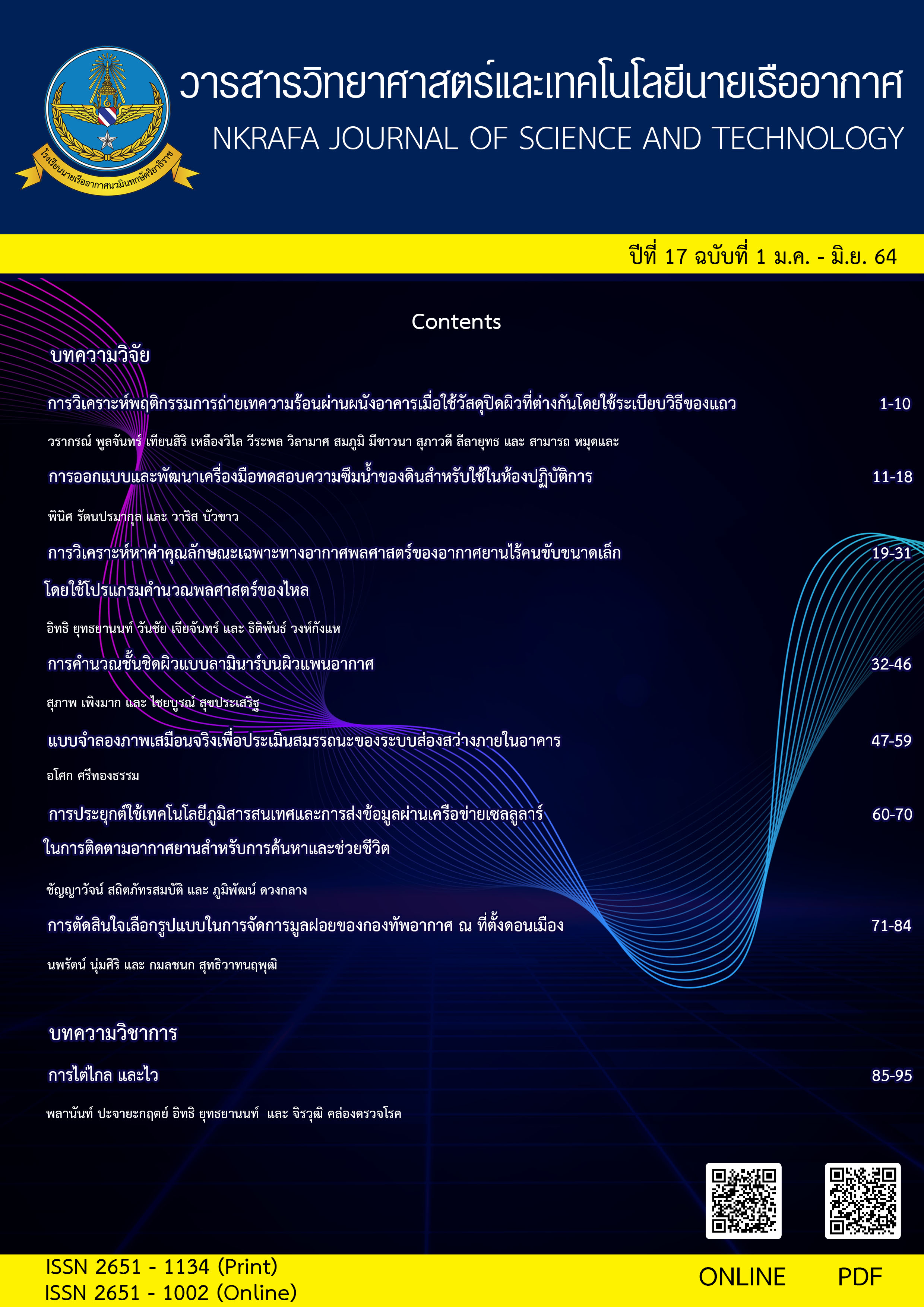Aerodynamic Analysis of TEagle Eyes X-II Mini UAV by Using CFD
Main Article Content
Abstract
The objective of this paper is to analyze aerodynamic characteristics and aircraft stability of TEagle Eyes X-II mini UAV by using Computational Fluid Dynamics (CFD) in range of low Reynolds number about 500,000 - 800,000. TEagle Eyes X-II is designed to be able to fly according to the required performance and predetermined mission, which can take off by hand-launched or by using catapult and land by gliding and descending to the ground. The analysis results can confirm the trend of TEagle Eyes X-II capabilities, which are defined in the conceptual design process, one of the process of research, development and construction of mini UAV. More efficient operation in tactical missions will be obtained, and the design of mini UAV, which meets the operational requirements of intelligence, surveillance and reconnaissance missions will be acquired. In addition, the knowledge gained will continue to serve as information on the research and development of the Royal Thai Air Force's Mini UAV that can support other missions.
Article Details

This work is licensed under a Creative Commons Attribution-NonCommercial-NoDerivatives 4.0 International License.
- Content and information in articles published in NKRAFA Journal of Science and Technology are comment and responsibility of authors of articles directly. Journal editorial do no need to agree or share any responsibility.
- NKRAFA Journal of Science and Technology Articles holds the copyright of the content, pictures, images etc. which published in it. If any person or agency require to reuse all or some part of articles, the permission must be obtained from the NKRAFA Journal of Science and Technology.
References
2. Jiajan, W., Tongsawang, K. and Sukuprakan, N. (2017). Aerodynamic Study and Analysis of Airfoils and Wings of Tailless Mini-UAV. NKRAFA Journal of Science and Technology, 13: 45-56.
3. Jiajan, W., Tongsawang, K. and Keawchay, K. (2018). Aerodynamic Investigations of Tailless Mini UAV by Using Subsonic Wind Tunnel. NKRAFA Journal of Science and Technology, 14: 77-85.
4. Coleman, H.W. and Steele, W.G. (1989). Experimentation and Uncertainty Analysis for Engineers. New York: John Wiley & Sons.
5. Versteeg, H.K. and Malalasekera, W. (2007). An Introduction to Computational Fluid Dynamics. Second Edition. London: Pearson Education Limited.
6. Jamshed, S. (2015). Using HPC for Computational Fluid Dynamics, A Guide to High Performance Computing for CFD Engineers. Oxford: Elsevier Inc.
7. Islam, S., Samsuzzoha, Ara, S., Islam, N. (2013). Unsteady Solutions of Thermal Boundary Layer Equations by using Finite Difference Method. Annals of Pure and Applied Mathematics. 3(2): 142-154.
8. Bertin, J.J. and Cummings, R.M. (2014). Aerodynamics for Engineers. Sixth Edition. London: Pearson Education Limited.


